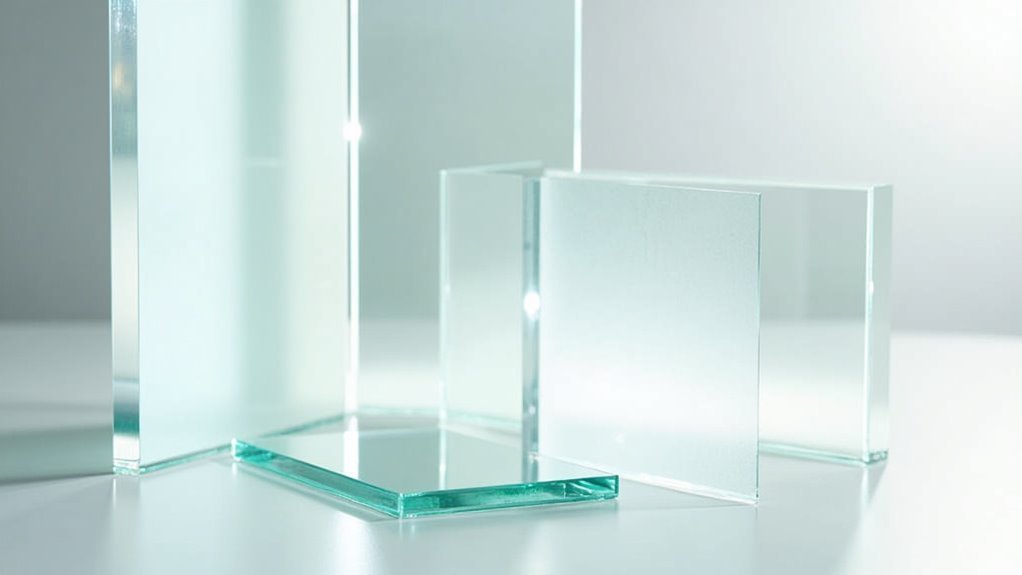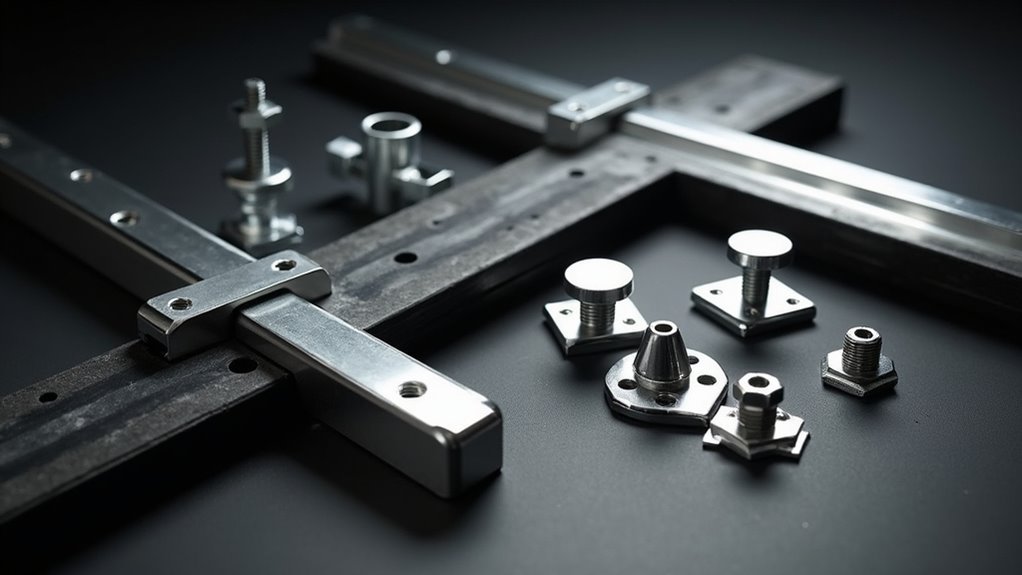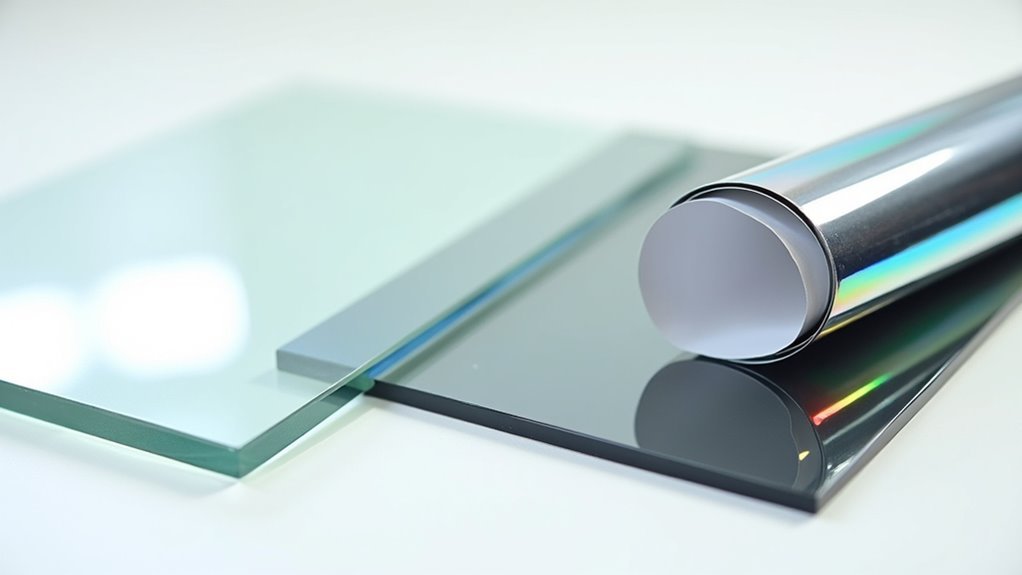You’re standing at the crossroads of creating your first two-way mirror display, and the material you choose will make or break your project. Glass offers unmatched clarity but demands careful handling, while acrylic provides durability at the cost of optical perfection. Then there’s the film option that’ll surprise you with its versatility. Each material carries hidden trade-offs that could completely change your final result.
Two-Way Mirror Glass and Acrylic Options

Two-way mirrors come in two primary material options: glass and acrylic, each offering distinct advantages for your display project.
Two-way mirror glass delivers superior clarity with 70% reflectivity and 30% transparency, making it ideal when you need minimal distortion. Standard thickness starts at 5mm, and you can custom order specific dimensions with precise tolerances. Glass provides excellent optical quality but requires careful handling.
Glass two-way mirrors provide 70% reflectivity with superior optical clarity, though they demand careful handling during installation.
Acrylic options offer shatterproof construction, making them considerably safer for high-traffic areas. While they’re more budget-friendly and lightweight, they’re susceptible to scratching.
Many suppliers provide laser cut services for precise dimensions and can supply safety data sheets for compliance requirements. Consider acrylic when durability and cost matter more than perfect optical clarity.
Monitor and Display Components
Monitor selection forms the foundation of your two-way mirror display system. You’ll want a high-quality Acer 1080p monitor for its clear display and excellent Raspberry Pi compatibility. Start by disassembling your monitor—remove the stand and screws so it fits properly behind your two-way mirror. Use a 90-degree HDMI adapter to manage cables neatly without creating back protrusions.
| Component | Purpose | Consideration |
|---|---|---|
| Monitor | Core display element | Measure dimensions after disassembly |
| HDMI Adapter | Cable management | 90-degree angle prevents protrusion |
| Raspberry Pi Kit | Smart mirror software | Enables easy customization |
Measure your monitor’s dimensions carefully after disassembly to guarantee proper fit within your custom frame. Whether you’re using an acrylic sheet or planning laser cutting, accurate measurements prevent costly mistakes.
Frame and Mounting Hardware

Building a robust frame requires three essential materials: 3/4-inch plywood for structural integrity, wood screws and glue for secure assembly, and precise measurements to accommodate your 18 x 24-inch two-way mirror.
The plywood provides stability and additional space for housing your monitor and components.
When assembling your frame, drill pocket holes for a clean finish and enhanced durability. Guarantee accurate measurement for a snug mirror fit.
Heavy-duty mounting tape offers an alternative attachment method, though you’ll need to handle the reflective surface carefully to prevent damage.
Consider drilling vent holes in the frame’s back panel to improve airflow around your monitor and Raspberry Pi setup.
This ventilation prevents overheating and guarantees consistent performance throughout extended operation periods.
Frequently Asked Questions
How to Make a Regular Mirror Into a Two-Way Mirror?
You’ll apply reflective window film to your mirror’s surface using a water-baby shampoo solution. Confirm proper lighting conditions where one side stays darker than the other for transparency effects.
What Are Two-Way Mirrors Made Of?
You’ll find two-way mirrors are made from glass sheets coated with thin reflective material, typically pyrolytic coating. They’re also available in acrylic for lighter, shatter-resistant options, though acrylic scratches more easily.
What Materials Do You Need to Make a Mirror How Can You Make a Mirror?
You’ll need a glass sheet, reflective coating like silver or aluminum, and adhesive backing. Apply the metallic coating to one side of the glass, then add protective backing material to create your mirror.
Are All Acrylic Mirrors Two-Way?
No, you can’t assume all acrylic mirrors are two-way. Standard acrylic mirrors don’t provide proper transparency and reflection balance. You’ll need specifically manufactured two-way acrylic mirrors with specialized coatings for true functionality.





Leave a Reply